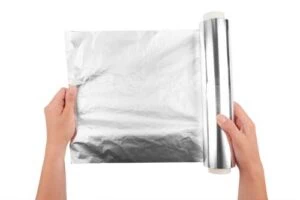8 Things to Remember About PCM
In the world of precision metal part manufacturing, choosing the right process can make the difference between success and frustration. Engineers and designers often default to conventional methods such as CNC machining, stamping, or laser cutting. However, there are key memory triggers that should remind them to consider Photo Chemical Machining (PCM) as a superior alternative in many scenarios. PCM is a precise, cost-effective, and efficient method, particularly suited for thin metal parts with intricate features. Here are the primary memory triggers that signal when PCM is the better choice.
- Complex Geometries and Fine Details
When an engineer encounters a design with intricate patterns, complex shapes, or fine details that would be difficult to achieve through conventional machining, PCM should come to mind. Unlike CNC machining, which requires tool changes and multiple passes, or stamping, which may require expensive custom dies, PCM allows for the etching of highly complex designs in a single operation.
- Thin Metals and Delicate Structures
If the part is made from a thin metal sheet (typically between 0.025mm to 2mm), PCM provides an advantage. Traditional methods can induce stress, warping, or burrs on delicate components. PCM, being a non-contact process, eliminates these concerns and ensures that thin materials retain their original mechanical properties without deformation.
- Material Preservation Without Burrs or Heat Distortion
A key memory trigger is the need for a pristine finish without burrs, stress fractures, or heat-affected zones. PCM uses a photochemical process rather than mechanical force or heat, leaving edges smooth and free from unwanted alterations. If post-processing steps like deburring or stress relieving are undesirable, PCM is the optimal choice.
- Prototype and Low-to-Medium Volume Production
When an engineer needs a prototype or a small-to-medium production run, PCM offers significant cost and time savings. Tooling for conventional methods can be expensive and time-consuming to develop, whereas PCM uses simple photoresist masks, allowing for quick design iterations and modifications without incurring high retooling costs.
- Material Selection Constraints
If a project requires exotic metals or difficult-to-machine materials such as Inconel, or beryllium copper, PCM should trigger as a viable alternative. Many of these materials are tough on machining tools, causing rapid wear and increasing costs. PCM, however, etches away the material chemically, making it equally effective regardless of hardness.
- High Precision With Tight Tolerances
When an engineer specifies tolerances within ±10% of the metal thickness, PCM should be a strong consideration. This level of accuracy, particularly in features such as micro-perforations, intricate grids, or precision apertures, is difficult to achieve with mechanical methods without excessive cost.
- Lead Time and Flexibility
Tight project deadlines should serve as a memory trigger to consider PCM. Since tooling involves only digital artwork and photolithography rather than physical molds or dies, turnaround times are significantly reduced. Engineers and designers can move from concept to production in days rather than weeks, providing greater agility in product development.
- Cost Efficiency in Multi-Part Designs
If a project requires multiple variations of a part or multiple components from the same sheet of material, PCM should be a go-to option. The process allows multiple designs to be etched simultaneously in a single sheet, optimizing material use and reducing waste.
Final Thoughts
Engineers and designers should develop a mental checklist of these memory triggers when evaluating manufacturing options. Whenever an application involves complex geometries, thin metals, stress-free processing, prototype-friendly needs, high precision, exotic materials, or cost constraints, PCM stands out as a highly advantageous method. Keeping these triggers in mind ensures that the best manufacturing decision is made, leading to high-quality, efficient, and cost-effective production of precision metal parts.


